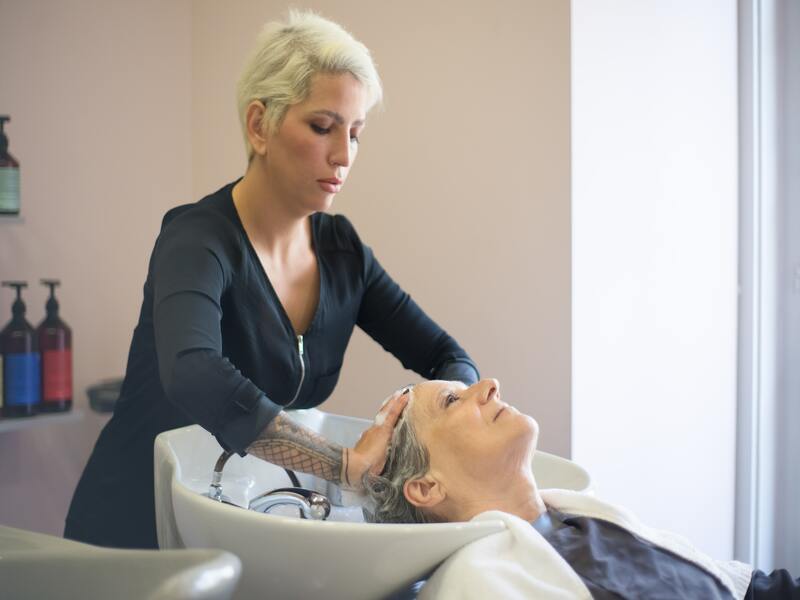Different stages of hair growth: Hair is a stratified squamous keratinized epithelium. It is made up of multiple layers of fat cells. The rope-like filaments in it provide structure and strength to the hair shaft. Human hair grows everywhere except the soles of the feet, the lips, palms, some external genital areas, and the navel. Like any other thing in the human body, hair follows a specific growth cycle. It had three distinct phases: anagen, catagen, and telogen. Each phase has its own particular characteristics that determine the length of the hair for better-personalized healthcare. All three phases occur at the same time.
The body has different types of hair. Each hair type has its own cell structure. This difference in structure gives the different hair types their unique characteristics and personalized healthcare. Humans develop the most hair on their scalps and faces (beard and mustache in males). The hair on the head grows to a few feet if it’s healthy.
The three stages of hair growth are the anagen, catagen, and telogen. Currently, every strand of hair on your body is at its own stage of development. Once the cycle is complete, it starts to form a new hair again. The rate of hair growth is about 6 inches or lesser, per year.
The different stages are:-

Anagen
It is the phase of growth. This is the phase in which there is hair growth. It grows approximately 1 cm per month. It begins in the papilla. It may last from two to six years. The time of this stage of growth is determined by genetics. The longer the hair stays, the longer it grows. The papilla cells divide for the production of new hair fibers. The follicle goes into the dermal layer to support the nourishment of the new hair. About 85% – 90% of the hair on your scalp is in its anagen phase right now!

Catagen
This is the phase when the follicle is in transition. The follicle renews itself. This phase spans for 2 weeks at most. The hair follicle disintegrates, leading to shrinkage. The nourishment from the dermal layer is laid off by the detached papilla. This is the beginning of the catagen phase and the biological end of anagen. The hair bulb doesn’t produce melanin. The follicular melanocytes die. There is no actual growth but, the follicle pushes the hair shaft out.

Telogen
It is known as the resting or shedding phase. It lasts for 1 to 4 months. The hair follicle remains at rest. But the epidermal cells in the inner lining of the hair follicle growth. They sometimes accumulate at the base to give temporary support. They also help in preserving the hair follicle without being dependent on the dermal nutrients like in the anagen phase.
After some time, the follicle begins to grow again. This softens the epidermal cells, which were giving support at the base of the hair shaft. This will break it from the hair root in the dermis. The shaft will finally be shed. After the telogen phase, a new hair shaft appears in two weeks. This phenomenon is called shedding (natural hair loss).
Rinsing and washing regularly help in the growth and development of hair. Also, a healthy diet helps to nourish the hair which results in personalized healthcare of hair. Use ayurvedic shampoos for cleansing to protect and nourish your hair. Book your consultation with our experts for better info Healthy hair! Happy hair!
How long does each hair phase last?
The growing phase lasts two to seven years and determines the length of our hair. This is the transitional stage that lasts about ten days.
Can you grow new hair follicles?
If hair is pulled out of the hair follicle, it can regrow. It’s possible that a damaged follicle will stop producing hair.13
What can stimulate hair growth?
Avoid restrictive dieting, Check your protein intake, Try caffeine-infused products, Explore essential oils, Boost your nutrient profile, Indulge in a scalp massage, Look into platelet-rich plasma treatment (PRP), and Hold the heat.
Does coconut oil help your hair?
In addition to being good for your scalp, coconut oil also moisturizes your hair. Since it’s easily absorbed, it works better than other oils for repairing dry hair.
How often should you wash your hair?
For the average person, every other day, or every 2 to 3 days, without washing is generally fine

